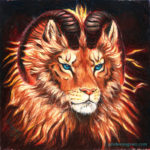A project I’ve been dreaming of for several months now, the Astral Chimera are a series of oil paintings re-imagining stars as mythic beasts (chimeras). The first batch, containing Sirius, Regulus, Fomalhaut, Procyon, Polaris and Betelgeuse recently made their debut at the Further Confusion art show. All six originals are currently for sale, and any unsold by this summer will be going to the AnthroCon art show in July. If you’re interested in owning an original, please drop me a line at goldeenogawa[at]gmail[dot]com.
And remember, you can click the image for a larger version. Enjoy!
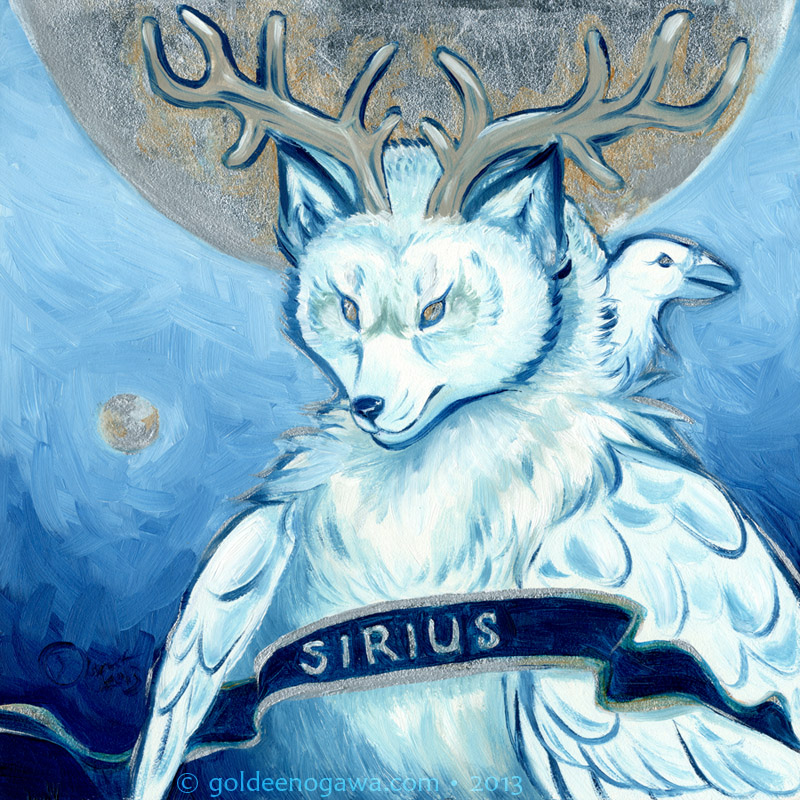
To start off my Astral Chimera series (stars as represented by chimeras) we have Alpha Canis Majoris, the Dog Star, brightest star in the night sky of Earth, better known to the western world as Sirius. He is here represented by a wolf-like chimera, as a nod to the star’s common association with dogs and hunting. Sirius B, a white dwarf star, is represented by a secondary head in the form of a white raven—ravens being frequent companions and collaborators of wolves.
Sirius A is a large, white-blue main sequence star with a spectral type of A1V, while Sirius B is a DA2 white dwarf.
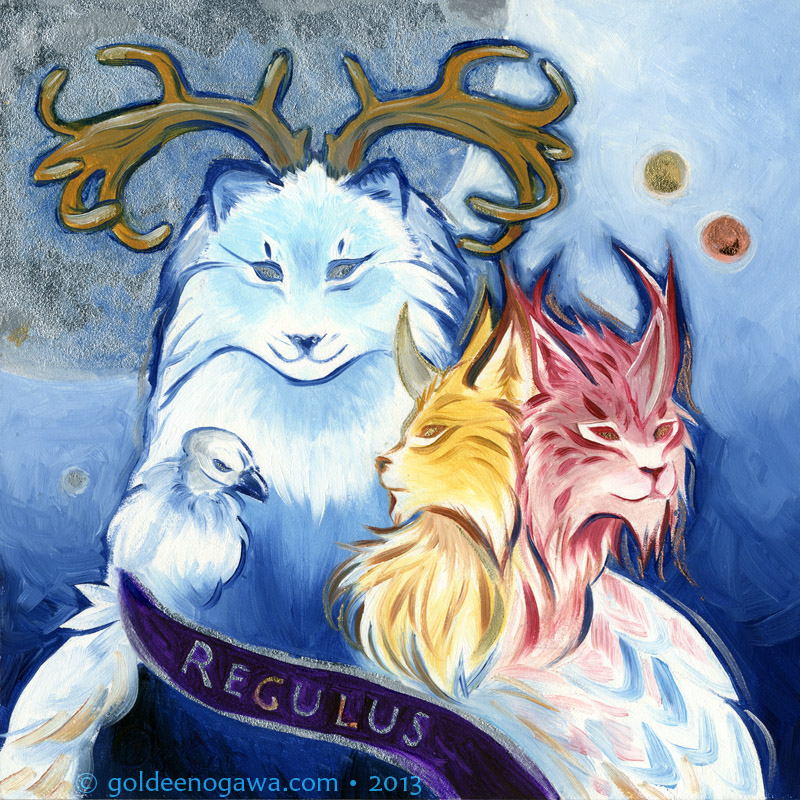
Alpha Leonis, whom the Persians knew as Venant, the Watcher of the North and King of Summer: four heads represent the double-binary system of Regulus. Comprised of a blue lynx-lion and white vulture pair (representing the blue-white Regulus A and its white dwarf companion) and a twin gold and red lynx pair (representing the fainter Regulus B and C), Regulus is also the first of the Royal Stars—the others being Fomalhaut, Aldebaran and Antares.
The Regulus system is made up of Regulus A, a blue-white main sequence star with a spectral type of B7V, which is orbited by what astronomers presume is a faint white dwarf. This pair in turn is orbited by another pair of stars, Regulus B (K1-2V) and Regulus C (M5V) which in turn orbit each other.
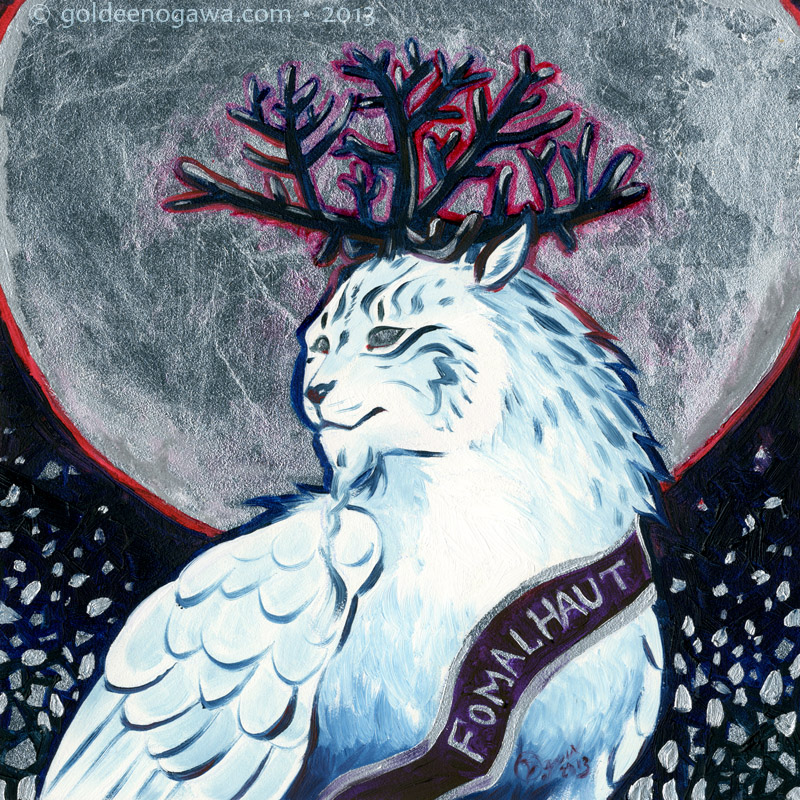
Alpha Piscis Austrini, whom the Persians knew as Hastorang, the Watcher of the South and the Monarch of Winter, better known to the western world as Fomalhaut. A single-star system, Fomalhaut is represented by a snowy leopard-like chimera with impressive branching antlers. The silver scaling in the background is an allusion to the star’s notable debris disc. It is the second of the Royal Stars, the others being Regulus (second in this batch), Aldebaran and Antares (still to come).
Fomalhaut is a cool white main sequence star with a spectral type of A3V.
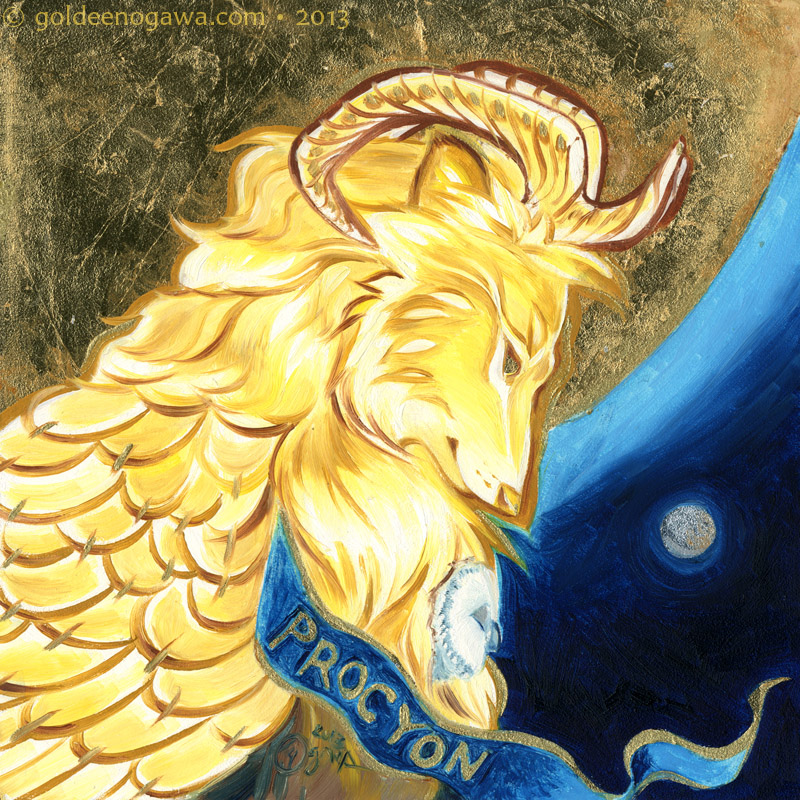
Alpha Canis Minoris, chief star of Canis Minor and the sister-star of Sirius, she best known to us by her Greek name: Procyon (literally: before the dog). Despite being part of a lesser-known constellation, Procyon is actually rather larger than Sirius, being almost sub-giant in size. Like her brother, however, she is also a binary system with a white dwarf companion—here represented by a white owl. Along with Sirius, she is also one of the vertices of the Winter Triangle (the third being Betelgeuse).
Procyon is a warm white star with a spectral type of F5IV-V, with a DQZ white dwarf companion.
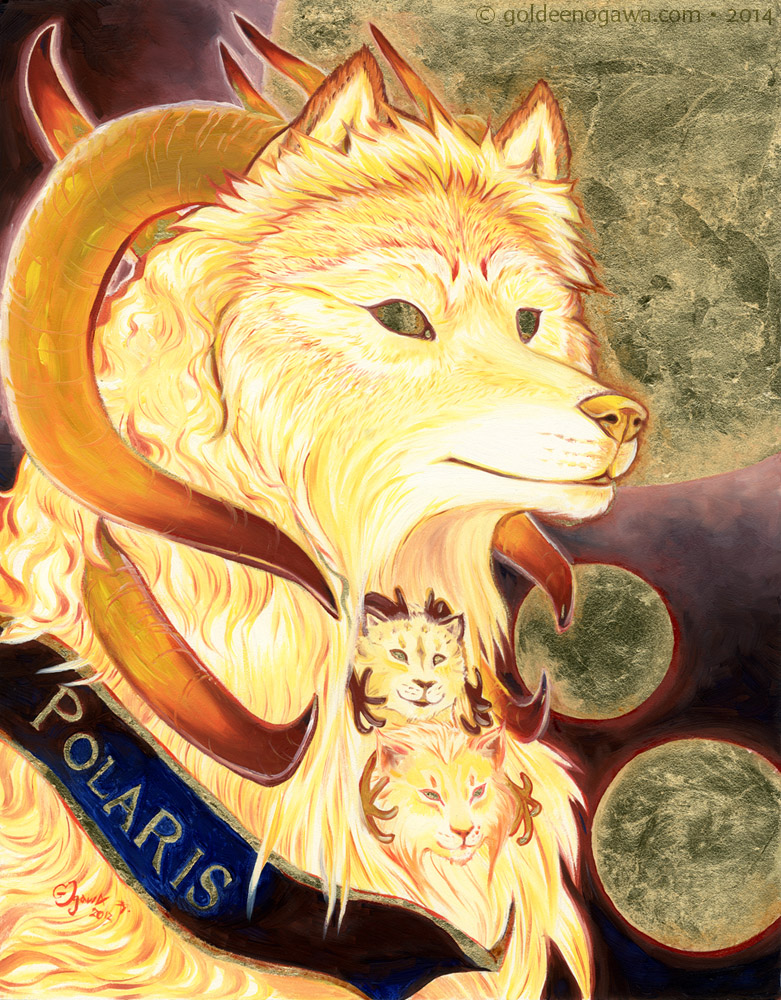
Alpha Ursae Minoris, the North Star, Pole Star, Lodestar, the first supergiant in the Astral Chimera series, this is Polaris. I chose to paint her on 11″x14″ board to give a sense of scale when compared to the others. Though essentially lupine, her horns were based of those of longhorn cattle—some of the most truly impressive horns you’ll ever see.
Polaris is a warm white star with a spectral type of F7Ib, with two main sequence companions of F6V and F3V. She also has two distant companions (not pictured).
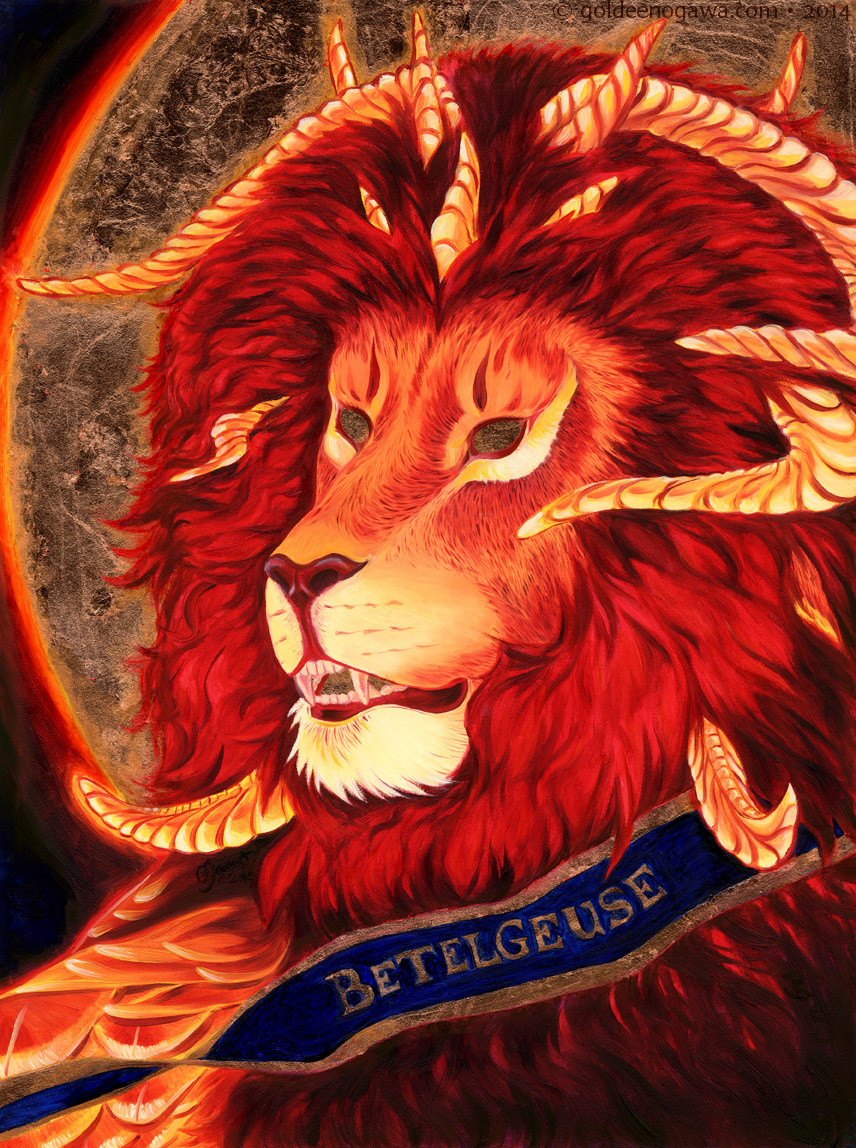
Alpha Orionis, the ninth-brightest star in the sky, better known to us as Betelgeuse (commonly pronounced like “beetle juice”). An enormous runaway red supergiant, and the leading star of the constellation Orion (though Beta Orionis, Rigel, is actually brighter), I chose to depict him as a leonine chimera with multiple curving ram horns. By far the largest of batch one (bigger even than fellow-supergiant Polaris), he is the third vertex of the Winter triangle, along with Sirius and Procyon.
Betelgeuse is an orange-red supergiant with a spectral type of M2Iab, and is expected to explode into a type II supernova within the next million years.
Eventually the Astral Chimera series will span 6 batches of 6 stars each. In batch 2, I’m tackling Algol, Aldebaran, Bellatrix, Canopus, Antares, and our very own Sun. Expect to see those sometime this Spring.
